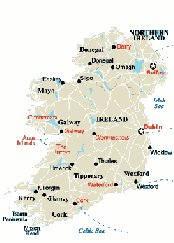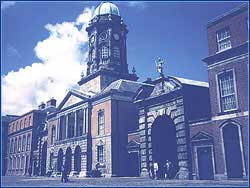

Although the 'Troubles' are far from over in the North, the recent referendum clearly signalled a willingness for peace and a genuine solution may be in sight. Meanwhile, the South has been busy shedding its quaintness tag to emerged as the darling of EU economies and a favourite among high-tech companies. If the country isn't quite the paradise that its misty-eyed emigrés tend to portray, it's nonetheless home to one of the most gregarious and welcoming people in Europe.
Full country name:
Ireland & Northern Ireland (part of the UK)
Area: 84,421 sq km/52,341 sq mi (70,282 sq km/43,575 sq mi in the
Republic; 14,139 sq km/8,766 sq mi in the North)
Population: 5.2 million (3.6 million in Ireland; 1.6 million in Northern
Ireland)
Capital city: Dublin (population 1.5 million)
People: Irish
Language: English, Irish (around 83,000 native speakers)
Religion: 95% Roman Catholic, 3.4% Protestant in the Republic; 60%
Protestant, 40% Roman Catholic in the Northern Ireland
Government: Democracy
Head of state: Mary McAleese (Republic), Queen Elizabeth II (Northern
Ireland)
Prime Minister: Bertie Ahern (Republic), Tony Blair (Northern Ireland)
Figures refer to Eire only
GDP: US$67 billion
GDP per head: US$18,600
Annual growth: 10%
Inflation: 2.4%
Major industries: Computer software, information technology, food
products, brewing, textiles, clothing
Major trading partners: EU (esp. UK, Germany, France), US
Member of EU: yes
Euro zone participant: yes
![]()
 Site
Designed and Developed by Webplus
Site
Designed and Developed by Webplus